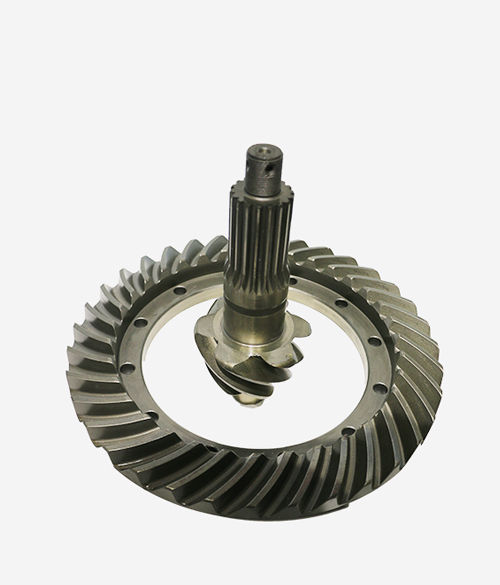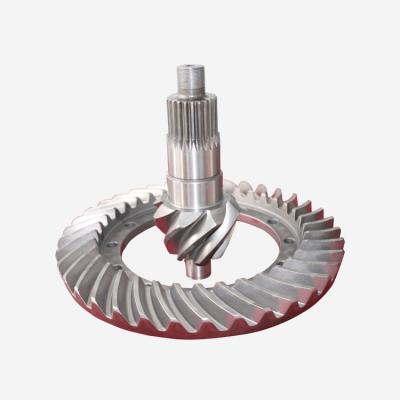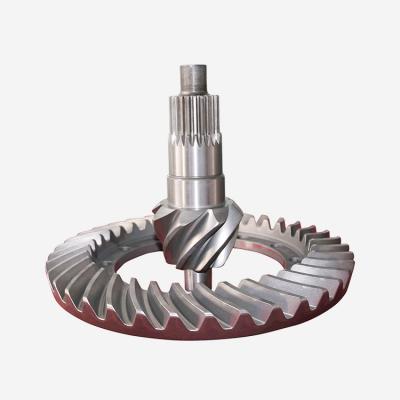Main factors of low hardness of driving and driven bevel gears
The driving bevel gear will produce volume expansion, large thermal stress and tissue stress during the quenching and cooling process. If the volume expansion and stress are uniform, its distortion is easy to control. However, there are many factors in production that will cause uneven cooling, such as the complex shape, size and wall thickness of the driving bevel gear. Under the same cooling conditions, it is difficult to reduce the temperature of each part of the workpiece uniformly. For example, a furnace has a large loading capacity, and there are even many types of mixed loads, and it is even less likely that the cooling between the workpieces will be uniform during the quenching process. The uneven cooling of the workpiece caused by the cooling characteristics of the medium is the root cause of the distortion of the workpiece. The uneven cooling caused by the structural factors of the workpiece, the deformation of the driving tooth after carburizing and quenching, and the out-of-round and plane warping of the inner hole of the driven tooth, After heat treatment, the surface and core hardness, effective hardened layer depth and metallographic weaving are qualified, but due to structural factors, the inner hole distortion is inconsistent, the allowance is slightly larger, and the workpiece clamp will also cause uneven cooling. The size of the quenching oil tank. The equipment, quenching liquid flow field changes, and the characteristics of the cooling medium will cause the workpiece to be uneven after quenching, and the distortion of the workpiece is also the main reason that is difficult to control.
The main reasons for the low hardness of the driving and driven bevel gears are as follows:
1. The blank needs to be strictly controlled. Normalized structure, strip shape, normalized hardness, etc.
2. Strictly implement the heat treatment operating procedures in the process documents, and do not change the process parameters at will. On-site technicians should go deep into the furnace, supervise the process flow, strengthen the quality control of the production process, and ensure that the problems on the production site can be dealt with in a timely, correct and effective manner.
3. During the production process, the process documents should be checked at any time to prevent low hardness due to changes in conditions.
4. Thermal instruments, instruments, hardness machines, regular identification of standard thermocouples and other testing instruments, marking and filling in records to ensure that the testing data is accurate and reliable.
5. Add a set of temperature monitoring instruments to the continuous tempering furnace to prevent "running temperature" and a large number of driving and driven bevel gears with low hardness.
6. Grinding according to the requirements of the process documents to prevent grinding annealing




